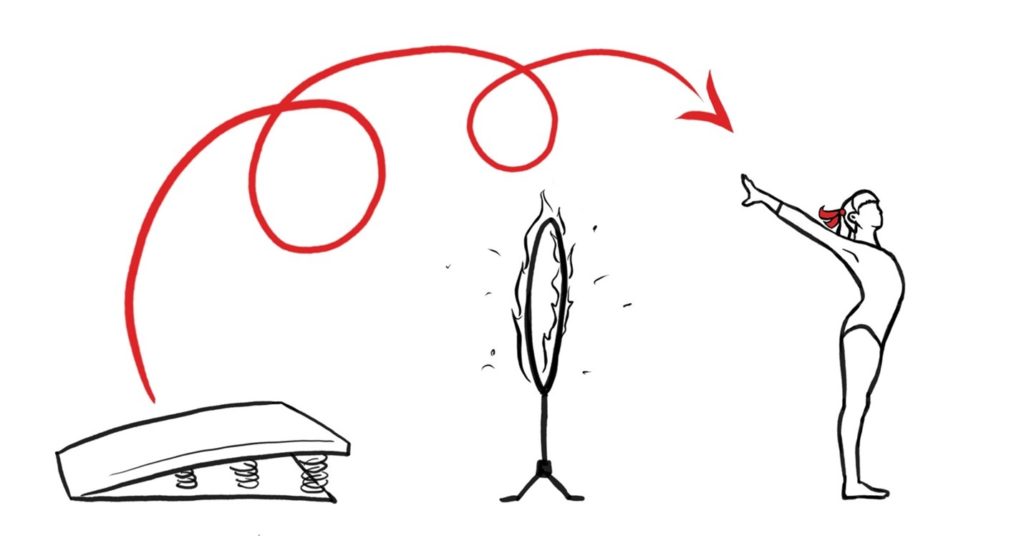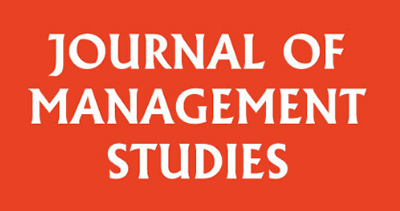
Managers distill their experience into simple rules. Top managers distill the lessons they learn into easy to remember simple rules that guide important aspects of their activity. Ray Dalio even wrote a best-selling book titled Principles: Life and Work, in which he shares his experience in the form of simple rules like “focus on the what-is before deciding what-to-do-about-it.” Jeff Bezos coined a proverb-like simple rule to guide the internal structure of Amazon, the famous two-pizza rule: “every internal team must be small enough so that it can be fed with two pizzas,” and used to season his annual letters to the shareholders with simple (but unnervingly precise) rules for decision-making: “most decisions should probably be made with somewhere around 70% of the information you wish you had. If you wait for 90%, in most cases, you’re probably being slow.” But how do executives create their simple rules? Our recent paper, published in the Journal of Management Studies, tries to answer this question. We interviewed 31 Romanian CEOs, gathered from them a repository of 202 simple rules that summarize the lessons they learned from experience, and understood how such a rule is created and shaped. While these rules may seem simple, they are in fact powerful tools for managing and leading. Some of their power yields exactly from their simplicity; one respondent said that the simple form helps him “being concise and inspirational,” while anotherpointed the advantages of brevity: “the shorter, the better accepted; if you explain for 10 minutes, you give opportunity for doubt.”
Simple rules are born in pairs after a triple insight. All the simple rules that we documented were the direct result of a negative experience, be that a big failure (e.g. a 200 million euro project closed mid-way), or just an ongoing bad situation (a constant stream of employees leaving for slightly bigger salaries). After a longer period of intense thinking, during which the problem keeps running in the CEO’s mind, simple rules appear, during aha moments or even “aha periods,” as the result of an insight. In a constant search for cues to solve the puzzle, managers use mundane observations, analogies, inputs from others, or just something they just read to clarify the problem and to spark not a simple, but a triple insight: what flawed assumption led to the problem, what is true instead, and what to do about it.
- What flawed assumption led to the problem. The first insight leads to the flawed assumption being clearly acknowledged and unlearned: “we thought that a client’s creditworthiness can be financially calculated, but during the crisis, usual client appraisal methods failed. I realized that you cannot assess a client from a distance, by looking at numbers”.
- What is true instead. The second insight leads to a new principle, that replaces the old belief and is encapsulated in a conceptual simple rule: “I realized that the person is more important than numbers.”
- What to do about it. The third insight helps translate the principle into daily behavior, yielding the operative simple rule: “we don’t send offers; we meet people face to face.”
This triple insight gives birth not to one, but to a pair of simple rules, a conceptual one that outlines the newly learned principle, and an operative one that helps enact this principle in daily behavior. The fact that simple rules are born in pairs is a key finding of our research. The table below showcases five such pairs of simple rules.
| Conceptual simple rule | Operative simple rule |
| Don’t hire for skills, hire for attitude | I hire together with my team |
| Developers need to take ownership and responsibility for what they code | Every time someone writes code, they must sign “Coded by X” |
| The person is more important than numbers | We don’t send offers; we meet people face to face |
| My roles of owner and CEO should not be mixed up | I ask myself weekly if I, as owner, would hire myself as manager |
| Don’t let clients’ peaks of enthusiasm pass | Email back immediately |
Managerial proverbs and their validation stamps. After managers have this kind of rule-creating insight, their simple rules go through articulating, testing, adapting, and refining. One important method of refining is proverbialization: managers find concise, memorable forms for their rules – “look at the person behind the position,” “the ratio between praise and criticism must be 3 to 1,” or “don’t make decisions for someone else” – making them easily remembered and shared.The rules are then shared within the organization, formally, in meetings, or informally, by example or by applying them together. However, the problem with sharing is, in the words of another interviewee, that “such rules are easy to hear and hard to implement.” A recipe to bypass this problem is to share the simple rule along with its whole narrative, making it easier to adopt and remember. This principle was discovered (and even turned into a simple rule for sharing simple rules) by another respondent: “if shared without its story, the rule would be ignored.; if the story is there, they pay more attention, and they remember better.” Creating and sharing simple rules is seen as a key role for any top manager: “the role of a CEO is to create systems that work and then to find the metaphor that helps the team vibrate, understand it, and apply it every day.”

Photo by Jeffrey Wegrzyn on StockSnap
The birth and development of a simple rule is accompanied and facilitated by a rollercoaster of feelings, from negative pressure at the beginning of the process, before the insight, to epiphany-like feelings at insight, and to confidence after successfully implementing it. This emotional journey puts a veritable validation stamp on the simple rule and may prevent its author to abandon it even when it is no longer adequate.
How can practitioners use our findings? Despite considering them valuable, managers acknowledge, articulate, and share their simple rules less often than they wish. This led us to propose here two useful tools for practitioners, one for individual managers and one for their teams. The first tool helps managers encode their own past experiences into simple rules and consists in writing down the lessons they learned in a format that maps the triple insight:
“Previously, I thought that (…),
but then I realized that (…).
Now, I/we (…).”
This simple framework can be used to acknowledge and articulate past lessons into an ever-growing personal portfolio of simple rules. Give it a try!
The second tool, this time for teams, is meant to help the lessons-learned process, conducted at the end of most projects, to yield lessons that are better remembered and applied in the future. We recommend the project manager conducting the lessons-learned meeting to explore our model and to conclude by guiding the team to articulate a simple proverb-like rule to encompass each lesson.
First image by Kira Atanasiu

0 Comments